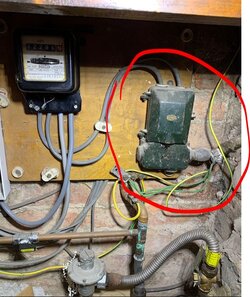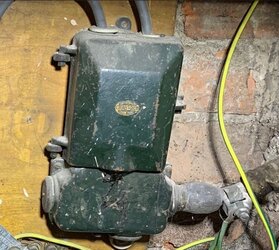T
Too_Wired
Hi,
I completed an EICR at a customer home in the week and came across this old Crabtree DNO equipment in the meter cupboard. Just two questions really
1. Does anyone know what the BS number of this equipment is (See pictures)
2. Will the DNO replace it if the customer requests an isolator switch fitted? (I'm quoting the customer on a new CCU) I ask because I've heard these old incoming DNO supply enclosures are not to be messed with, at all.
Thank you in advance
I completed an EICR at a customer home in the week and came across this old Crabtree DNO equipment in the meter cupboard. Just two questions really
1. Does anyone know what the BS number of this equipment is (See pictures)
2. Will the DNO replace it if the customer requests an isolator switch fitted? (I'm quoting the customer on a new CCU) I ask because I've heard these old incoming DNO supply enclosures are not to be messed with, at all.
Thank you in advance








 Anything of value such as instruction sheets for the termination kit will get borrowed... I'm sure they won't mind
Anything of value such as instruction sheets for the termination kit will get borrowed... I'm sure they won't mind






